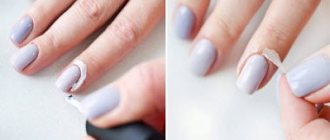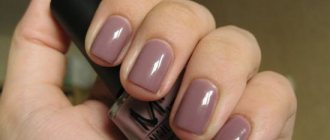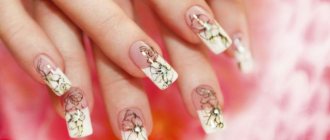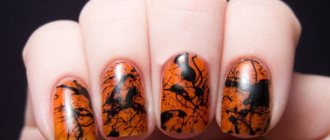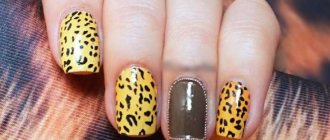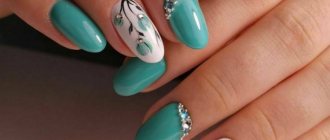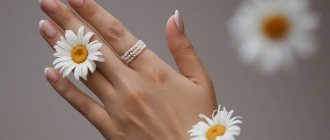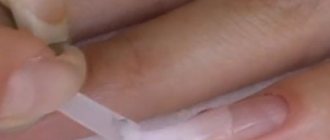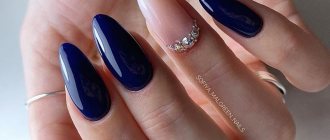The modern cult of manicures began a long time ago. Since ancient times, women have taken care of their hands and nails. Of course, like most beauty treatments, manicure has its origins in Ancient Egypt. But throughout history, many interesting events and facts related to painting nails have arisen.
Nowadays it’s hard to imagine a modern girl without a manicure. Sometimes it can be bright neon polishes, sometimes a simple French polish, but most take care of their nails, making them neat.
This article will be of interest to anyone who wants to know interesting facts about manicure, the beginning of the manicure rebellion and original nails.
A primitive manicure set was discovered on the territory of Ancient Babylon
People began to take care of the skin of their hands and nails a very long time ago. Manicure appeared long before other care procedures, because healthy nails and hands spoke of the good condition of the whole body.
The first manicure set was discovered on the territory of Ancient Babylon . There is no doubt that it belonged to that period of time. This is evidenced by the material of the instruments. The oldest manicure apparatus dates back to 3200 BC.
History of manicure
Nails have been cared for thousands of years ago. It is known that the most ancient manicure set was discovered by archaeologists in the territory of Ancient Babylon (modern territory of Iraq). True, there was hardly an orange stick and a buff.
©Getty
In Ancient Egypt, the length and color of nails indicated a person’s class affiliation - for example, representatives of the nobility had bright manicures.
© Makeup.ru
Queen Cleopatra used henna to decorate her nails and hands, and used oils for care.
©Getty
In Ancient Greece and Rome there was a special category of slaves - cosmetics. They helped people of noble birth take care of themselves. This included polishing the nails using a special composition containing animal fat.
The prototype of modern nail polishes appeared in ancient Chinese civilization. It was a paint made from crushed minerals, wax, egg yolks and gum arabic. There is also information that gold dust was used to decorate nails.
© Makeup.ru
In Ancient China, people tried to grow their nails. And not in the modern sense, but up to 25 cm (where is modern extension)! This was considered a sure way to protect yourself from evil forces. Those who were unable to achieve the “reference” length (because their nails simply broke) put pointed metal tips on their fingers.
In the Middle Ages, manicure, on the contrary, was associated with evil spirits. It got to the point that the Inquisition declared this procedure sinful. But after some time, everything changed - and well-groomed nails again became one of the essential attributes of the appearance of noble people.
© Makeup.ru
It is interesting, for example, that during the Renaissance it was customary at court to grow a nail on one of the little fingers - in order to politely knock on the door with it before entering. Polishing nails with a special block covered with suede was common - it can be considered the prototype of a modern buff.
© Makeup.ru
And in 1830, the first full-fledged manicure set appeared - it was created by the doctor of the French king Louis-Philippe. After the monarch's finger became inflamed due to a carelessly torn off hangnail, he was supposed to properly care for his nails and the skin around him.
Return to contents
We recommend reading:
- Manicure in beige tones 2022
- Red French: the brightest manicure trend in 2022
- New ideas for manicure
In Ancient Egypt, one could determine a person's class by manicure.
Ancient Egypt is famous for the fact that it was there that many body care procedures were invented. Until now, their recipes are used by modern makeup artists, massage therapists and other beauty industry professionals.
In ancient times, it was possible to determine a person's class by fingernails . Along with their lips, Assyrian soldiers painted them before fighting. This was a mandatory procedure before the battle.
Also, the color of the nails could tell a lot. For example, only high-ranking classes wore dark manicure. In Ancient Egypt, there was even a special position called “keeper of the pharaoh’s nails.”
Cleopatra cared for her hands with oils and decorated her nails with henna
Cleopatra is considered not only the most beautiful woman in Egypt, but throughout the world. She definitely knew a lot about taking care of her appearance. Priests created special nail paints and caring oils. For a very long time the composition of these substances was kept secret.
Cleopatra decided to make public all her skin care recipes and publish a large collection. This book has survived to this day. She used many of the recipes herself and they have survived to this day. The rubs made from it contained animal and vegetable fat, herbal extracts, and mineral components.
The surface of the palms, feet and nails was decorated with designs made with henna. Nails were sometimes soaked in clay to give them a vibrant color . High classes wore nails in red, brown and even green. Servants had their nails painted in pale shades.
How to replace gel polish?
What about those who are not ready to immediately change their habits and give up gel nail coatings? You can act gradually. Start, for example, with nude shades or a medicated finish. Beauty salons, pharmacies and shops offer a large selection of all kinds of strengthening products, special varnishes and even medicinal bio-wax for nails.
At first, they will help nails that are accustomed to being under a thick layer of gel not to break. Then the nail plate will begin to recover, and the nails will become noticeably stronger. You can help them with vitamins and regular care.
The first nail polish similar to modern nail polish appeared in China
In China, long nails (up to 25 centimeters) were grown not only by women, but also by men. The former thereby demonstrated their detachment from manual labor, while the latter wore them as an amulet and as a sign of masculinity.
Some scientists believe that it was in China that varnish appeared, which in composition and properties is similar to modern varnish . It was invented back in the 30th century BC. e. and to this day this composition remains the most persistent and in demand.
Despite the fact that hardware manicure is becoming increasingly popular, ordinary varnishes do not go out of use. After all, with the help of a special nail polish remover, a regular manicure can be changed at least every day.
What you need for healthy nails: stages of comprehensive care
It involves not only external influences, but also proper nutrition, balanced with vitamins and minerals. Cleansing, nutrition and care are mandatory procedures. All you need to clean is soap and a soft brush. If dirt and small particles get clogged under the nails, they must be periodically removed with a non-sharp object to prevent the formation of foci of infection.
All about choosing and using nail and cuticle oil
Nourishment of nails helps strengthen them, even out color, and prevent brittleness. Use ready-made nutritional formulas with vitamins and minerals. Apply with a brush daily before bed. Take breaks between gel polish coats to do nourishing treatments and baths at least a week every two months.
You can strengthen your nails with salt and iodine baths. For a 300 ml container, 2 tbsp is enough. l salt and 3-5 drops of iodine. Exposure time – 15 minutes.
Hand baths: 30 recipes for different purposes
Salt with soda or lemon juice can also be used for bleaching baths when painting plates with varnishes or after physical work.
The second stage is a hygienic manicure. This is a traditional edged or hardware manicure, the purpose of which is to remove the cuticle, remove overgrown skin on the side ridges, and also correct the shape of the plate. It is recommended to do a manicure every 10-15 days.
Between trips to the salon, you can do a European manicure at home, in which the cuticle is steamed or softened with an acid keratolytic, and then gently pushed back with an orange stick without cutting with scissors or tweezers.
If burrs appear on the cuticle, you must carefully cut them off with scissors and apply a disinfectant and anti-inflammatory agent. Regularly file the edges of the plates so that they do not catch on anything and are not injured.
Use a nourishing and moisturizing product for your hands and feet, applying it liberally to the plates, especially in the cuticle area.
Do housework, gardening and any work with chemicals only with gloves.
If you have any unknown conditions on your hands and feet, contact a dermatologist.
Do-it-yourself pedicure at home: types of procedures, step-by-step instructions, foot care
Maxwell Lappe made false nails popular
Not everyone is so lucky with the rapid growth of nails, but even if someone manages to grow them to the required length, they often break. That's why false nails have become so popular.
In 1934, a dentist who was far from the fashion for manicures came up with manicure plates for his own purposes . He made them for clients who had the bad habit of constantly biting their nails. Soon these plates turned into false nails.
This invention gained enormous popularity. False nails are still sold today. They are made to suit every taste: with design, without design, in different lengths and shapes. Most often, manicurists buy them to practice doing nail designs or to show clients polish colors.
Nail growth
The growth rate is about 3-6 mm per month. It takes three to six months for a nail to renew itself from root to free edge, depending on age, gender, heredity and lifestyle.
- They grow faster at a young age;
- During pregnancy they grow faster;
- In summer faster than in winter;
- It's faster on the right hand than on the left.
- It's faster on your hands than on your feet.
Growth slowdown factors:
- Alcohol, drugs, smoking;
- Hormonal disorders and menopause;
- Damage to the matrix;
- Poor nutrition, overeating;
- Presence of systemic diseases.
French manicure was not invented by the French.
Despite its name, French manicure was not invented by the French or even in France . This type of nail coloring originates in the USA.
All French lovers should be indebted to Jeff Pink, who not only founded the famous company for the creation of varnishes and manicure equipment, but also saved many people from the headache of “how to make your nails neat and beautiful at the same time.”
The manicure received this name because after its creation, it was widely popular among French models.
Reason No. 4: fashion for naturalness
It's paradoxical, but unusual nail designs have become commonplace. It’s already difficult to surprise anyone with bright colors, complex patterns and even voluminous rhinestones. Even if you paint all 10 nails in different colors, you won’t get a stunning effect, but it will always seem like you have a popular chocolate dragee on your hands. (Checked personally by the author of the article.)
Famous actresses, bloggers and opinion leaders are increasingly appearing in public with bare nails or clear nail polish. The fashion for naturalness is gaining momentum, including in the wake of the impending general environmental disaster.
Initially, white varnish was used to cover the nails on the inside.
This method was invented to emphasize the naturalness and neatness of the nails. Not everyone likes bright colors, but everyone understands that nails should look well-groomed.
White varnish was originally used to cover the inside of the nails . When they grew to the required length, the part lagging behind the finger was covered with white. So the nails seemed natural and not tacky. Nowadays a special white pencil is used for these purposes.
What changes in nails can indicate diseases?
Based on the nail plates, one can suspect diseases of the gastrointestinal tract, hepatobiliary system (responsible for the production and removal of bile), impaired lymph and blood circulation, as well as skin pathologies, for example, psoriasis, lichen planus, etc.
Milky white nails
The so-called Terry's nails indicate a serious liver disease such as cirrhosis.
Photo: unsplash.com/@amentia_monk
Yellow nails
They will talk about jaundice or yellow nail syndrome, in which pathology of lymph circulation, inflammation of the mucous membranes of the nose and lung diseases can be suspected.
Blue holes
They will give a signal that the patient may have Wilson-Konovalov disease. This is damage to the liver and nervous system due to excess copper deposition.
Bruising under the nails
May be a symptom of psoriasis, rheumatism of the heart muscle, congenital heart disease, etc.
Blue or purple nails
Such changes are called cyanosis. They arise due to vasoconstriction and may indicate congestive heart failure or vascular disease.
Sos signals: how to understand that the body does not have enough calcium
Autumn vitamin deficiency. What vitamins is your body lacking?
Brown nails
As a rule, such pigmentation is caused by lichen planus. However, a similar symptom is typical for melanoma (a type of skin cancer), hemochromatosis (a hereditary disease in which the body absorbs and stores too much iron), thyroid infections, and HIV. Also, the color of your nails may change if you often don't eat enough.
White stripes on nails
Two white stripes parallel to the lunula are called Muhrke's lines. Appears in diseases of the liver, kidneys and nutritional deficiencies.
Narrow white lines on nails
They are called Mies lines. They can cause diseases such as leprosy, tuberculosis, malaria, herpes, kidney and heart failure, and pneumonia.
In the 1920-30s, moon manicure was especially popular
Lunar manicure appeared only thanks to the creation of new paint for cars in America. The famous makeup artist was inspired by the new possibilities of the automobile industry and came up with color painting for nail plates.
To make a moon manicure, you need to apply polish only to the middle of the nail, leaving its hole and tip untouched. In the 1930s, this type of manicure also remained popular, but now the nail plate is painted over almost completely, with the exception of only the nail hole .
Modern masters still offer a similar service to their clients. These nails look unusual and have their own history. Of course, modern lunar manicure differs in quality from its predecessor.
Frederick Slack accidentally became the father of acrylic nail art.
Another dentist who accidentally made popular discoveries in the world of the beauty industry. Acrylic is a very popular material for dentists to use. One day, Frederick Slack urgently needed to fix a broken nail, he decided to do it with acrylic. Soon this material began to be used to create acrylic manicure - the most popular in the modern world.
.
Jeff Pink invented French
About 40 years ago, a director he knew approached Jeff Pink with complaints that he had to spend a lot of time caring for actresses’ nails so that their hands would always look well-groomed on screen.
Jeff Pink managed to solve his problem, and he created French . This manicure was a revolutionary discovery. French models were especially happy with this innovation.
In the modern world, in beauty salons, you will be offered more than 10 jacket options. The technique for creating such a manicure is very complex. You need to put a lot of effort and be careful so that each strip is even. For these purposes, beginners often use stencils.
1 0

